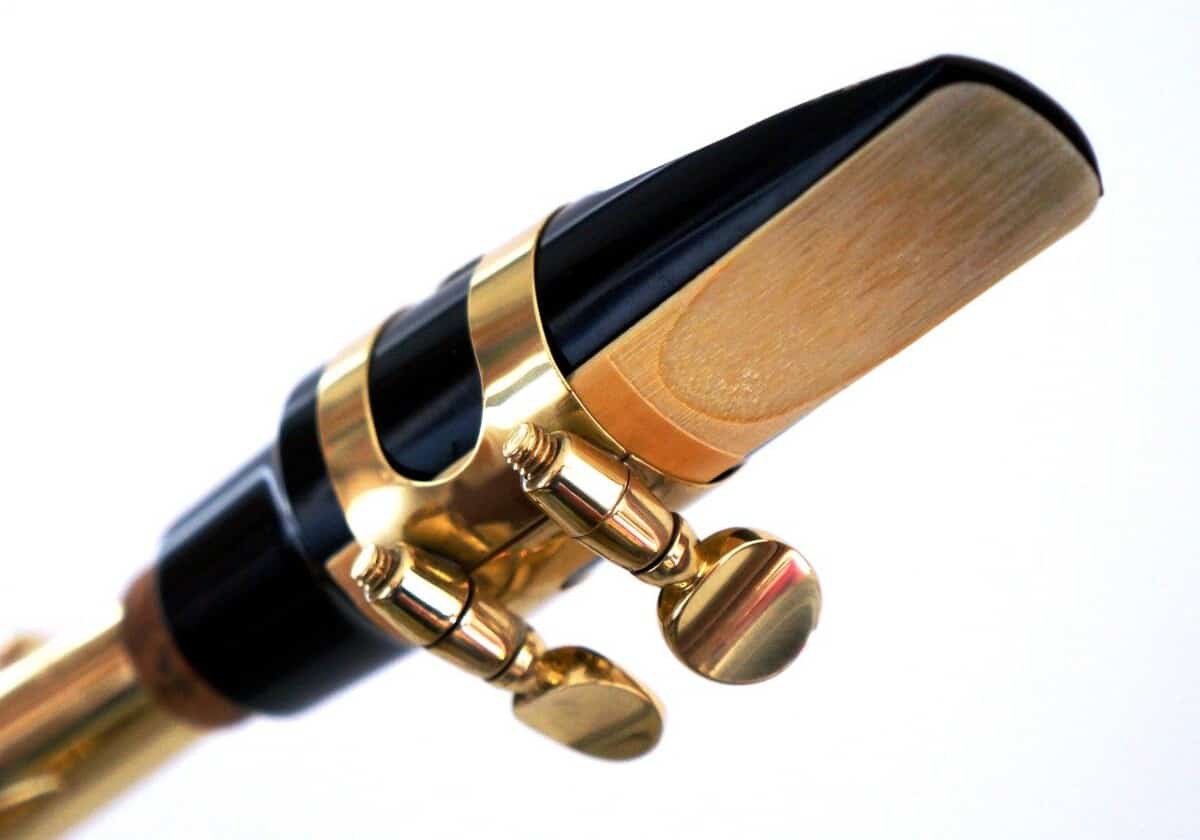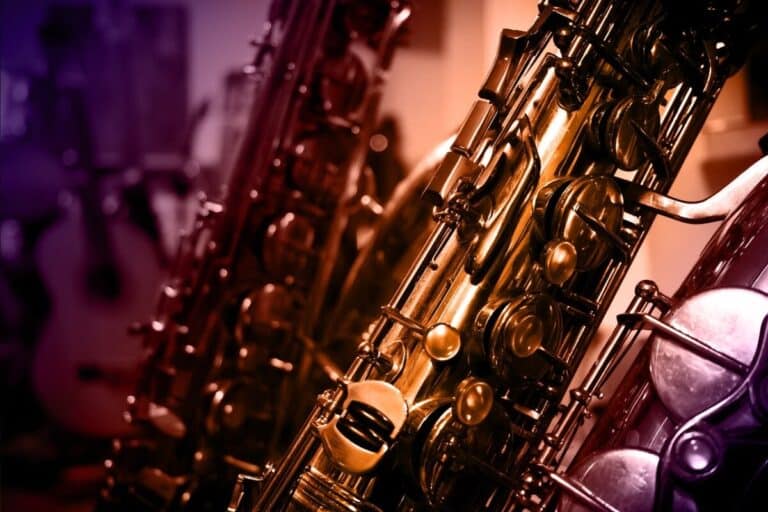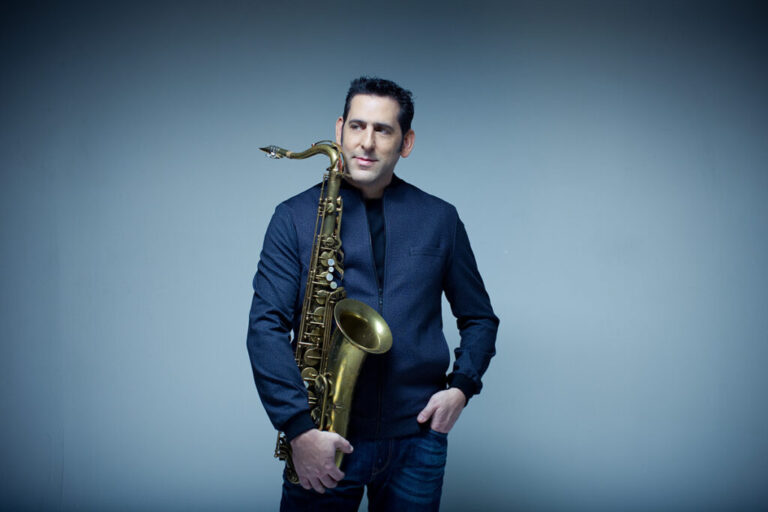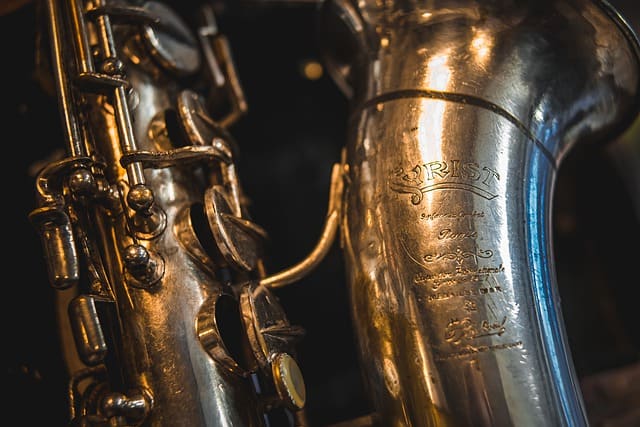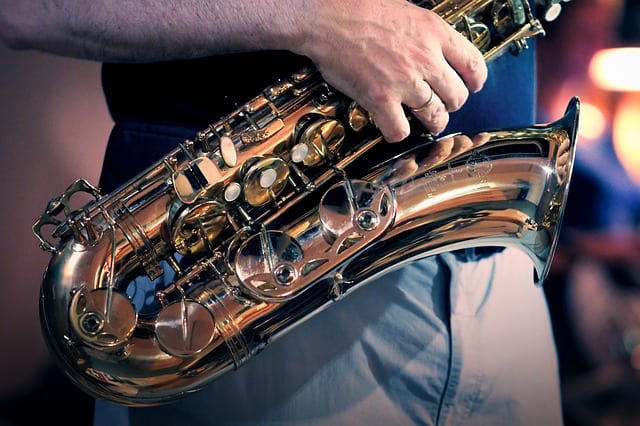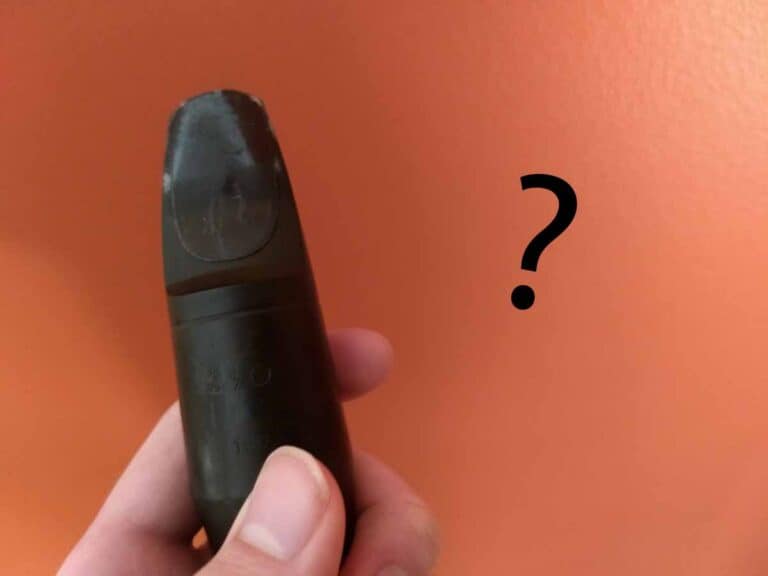Saxophone Mouthpiece Tip Openings
You have probably heard at some point that the tip opening of a mouthpiece is often a consideration in determining what mouthpiece to buy. If this isn’t something you are familiar with, we’ll aim to bring you up to speed as quickly as possible.
What is tip opening?
Tip opening is the distance between the tip of the reed and the tip of the mouthpiece. Larger tip openings are associated with a larger sound and more resistance, while smaller tip openings are associated with a more delicate sound and stable intonation.
As the size of the tip opening can drastically change the type of sound that a saxophonist produces, it tends to be a major consideration when deciding what mouthpiece to use. There is no ‘correct’ tip opening; all tip opening sizes have their pros and cons.
The mouthpiece numbers
If you look on the back (or table) of your mouthpiece, you will most likely find a number there that ranges from 1 – 10.
The number on a saxophone mouthpiece represents the size of the tip opening, usually on a scale of 1 – 10. Lower numbers indicate smaller tip openings, while higher numbers indicate larger tip openings.
Unfortunately, mouthpieces are rarely labelled consistently between brands. If one brand lists a mouthpiece as having a tip opening size of “10”, for instance, that may only be the equivalent of a 7 for a different brand. So, while mouthpiece numbers are a good general guide of how you can expect it to play, they are by no means an absolute measurement.
Some brands don’t use numbers at all. In these cases, they will usually use some other way of specifying the tip opening on the mouthpiece. For instance, the Selmer Paris brand mouthpieces tend to use a letter instead of a number, where A represents the smallest tip opening and G represents a much larger tip opening.
Even if there is a number, it may not always be on a scale of 1 – 10. Some Vandoren mouthpieces seem to be on a scale that goes up to 100.
As there tends to be a lot of ambiguity regarding the actual size of a tip opening, I recommend looking up the true tip opening of a mouthpiece yourself. At this point, plenty of people have made charts which compare the tip openings of a wide variety of mouthpieces across different brands to each other.
If you want to find these charts, the easiest way to do so is to Google “Saxophone mouthpiece tip opening chart”. Most charts measure tip openings in either millimeters or inches, so you’ll be able to get a much better idea of what the true tip opening actually is.
I personally like the charts from this article, as I find they make comparisons really easy.
How does tip opening affect sound?
Larger tip openings make the sound of an instrument brighter and more easily able to cut through other noise. Smaller tip openings make the sound darker and more delicate, making them more appropriate for classical music and blending in with other instruments.
Tip opening also affects a variety of other things, of course, such as ease of playing and intonation. However, the biggest difference that tip opening makes is with respect to tone color. To have a smaller tip opening is to make the sound of a saxophone more closely resemble that of a woodwind instrument, while a larger tip opening produces a sound more similar to that of a brass instrument.
What tip opening should I have?
You should almost always start out with a mouthpiece that has a smaller tip opening because they are easier to play on and have a more stable intonation. If you later find that you want a bigger and brighter sound, then it is advisable to eventually switch to a mouthpiece with a larger tip opening.
First, there is no ‘best’ tip opening. Smaller tip openings have both advantages and disadvantages, and the same is true for larger tip openings. Although I recommend always starting on a smaller tip opening, it is worth having a thorough understanding about what kind of difference tip opening size makes so that you can later make the decision to switch to a more open mouthpiece as you see fit.
| Smaller tip openings | Larger tip openings |
| Easier to play on and require less air to produce a sound | Harder to play on and require more air to produce a sound |
| More stable intonation | Less stable intonation, but make it easier to bend pitch |
| Darker, more delicate sound | Bigger, brighter sound |
| Able to play at extremely soft volumes | Able to play at extremely loud volumes and cut through ensembles |
| Soft reeds can result in a thin sound | Can produce a full sound even with soft reeds |
| Can sound good even with a hard reed | Can be extremely difficult to play with a harder reed |
| More common in classical music | More common in jazz |
What to do if you are a beginner
As I’ve said previously, I almost always recommend you start out with a smaller tip opening if you are fairly new to the saxophone. Mouthpieces that are more open can be incredibly difficult to play on and require more air to produce any sound at all. From my experience, beginners simply cannot handle this because they have not developed the muscles in their lips to compensate for greater resistance.
Mouthpieces with larger tip openings are similar to harder reeds. They produce a fuller sound, at the cost of ease of playing. If you don’t have the strength to play on a particular mouthpiece, then you won’t get the benefit of a larger sound from it. Buy a mouthpiece that you can play on currently, not one that you want to grow into.
Also, mouthpieces with smaller tip openings tend to naturally have more stable intonation. If you can get your instrument in tune and you are using a mouthpiece with a smaller opening, you are more likely to be able to stay in tune regardless of any changes you make in your embouchure, whether those changes be deliberate or accidental. For beginners who may not have quite figured out their embouchure yet, this can be helpful.
Of course, this has the downside that bending pitch is more difficult on a less-open mouthpiece, but at the beginner level this shouldn’t be particularly important.
If you later decide to switch to a larger tip opening out of desire for a larger sound or greater ability to bend pitch, that is completely reasonable. However, you will likely struggle if you aim for the more open mouthpiece right off the bat.
Other considerations
Type of music
The saxophone is a versatile instrument that can produce many different kinds of sounds. Often, the sound which you are aiming for will depend on the type of music you are playing. As such, it can be helpful to pick a mouthpiece which is tailored to the main type of music that you wish to play.
In general, mouthpieces with smaller tip openings are better at producing a sound which blends in with other woodwinds. If you are playing in an ensemble with flutes, clarinets, and oboes (or strings), you may want a smaller tip opening so as to produce a sound which better blends with theirs and doesn’t cover them up.
Of course, saxophonists also often play in jazz bands where they have to compete to be heard over brass instruments. A lead alto saxophonist in a jazz band will often need a larger mouthpiece to be heard over both the brass instruments and the other saxophonists. I’ve formerly tried to play lead alto in jazz bands while using a smaller tip opening, and in these instances I was often critiqued that my sound wasn’t able to project.
Setting
Many saxophonists play classical music, but do so as soloists. In these instances, having a brighter sound may be completely acceptable, and can allow the soloist to distinguish their sound from the rest of the ensemble.
Likewise, if you are playing classical music in a marching band setting, you may need a mouthpiece which will allow you to cut through and be heard even from a great distance. A larger tip opening can have a great impact in these kinds of circumstances.
On the other side of the spectrum, the second alto or second tenor sax of a jazz band may not need to cut through the ensemble the same way that the leads do. In these instances, it is plausible that a saxophonist might use a somewhat smaller tip opening so as to blend in more.
Reed strength
Many saxophonists will have multiple mouthpieces of the same brand and type, with the only difference being the tip opening. The reason for this is often to compensate for the strengths of reeds that they use.
In general, using a reed which is already soft on a mouthpiece with a small tip opening will result in a sound which is somewhat shallow. This is less than ideal. One easy way to compensate for this is to put a soft reed on a mouthpiece with a larger tip opening, thus adding more resistance. This often allows for a fuller sound on a reed which might otherwise be worth throwing away.
Conversely, it is possible to get more sound out of a harder reed by using a mouthpiece with a smaller tip opening. Many reeds can be extremely hard to play on right out of the box, and you can use a mouthpiece to compensate for that.
So, one consideration for which mouthpiece to buy is to what extent you find it difficult to play on the reeds you currently use. If many of your reeds run hard as is, you may want to opt for a smaller tip opening. If you feel like your reeds are so soft that it is negatively impacting your sound, it may be time to either use harder reeds or a wider tip opening.
Ideally, you would be able to buy two similar mouthpieces with the only difference between them being their tip opening – but this may be unreasonable from a financial standpoint. If you cannot do this, it is better to make the decision based on your current ease of playing.
Personal preference
You know your own sound better than anyone else does. You also probably know what sound you’re aiming for, and that should be your primary consideration first and foremost. My recommendation is to try out lots of different mouthpieces with the option to not buy them or otherwise return them. Some music stores and even some online stores will allow you to do this.
Going through the process of trying out mouthpieces allows you to get a good sense of what sounds you like and do not like. This process will help you determine whether to get a larger or smaller tip opening than anything in this article will.
It is important to like your own sound. There’s no right or wrong answer regarding what tip opening to get. So, you have to be the ultimate arbiter in your purchasing decisions.
Tip opening isn’t a competition
Some saxophonists feel that they need to buy the mouthpiece that has the absolute largest tip opening. Sometimes they will also try to play on the highest strength reeds in addition to this.
I personally find this to be silly. Larger tip openings are by no means objectively better than smaller tip openings. Play on a mouthpiece which you are able to play on without wiping yourself out, and make sure that you like the sound of it. There’s no need to try to play on larger tip openings than anyone else, so stick to what you are comfortable with.
Also, I do not recommend buying a mouthpiece to “grow into”. If you cannot currently play easily on a mouthpiece which you are considering purchasing, I recommend opting for something else.
Conclusion
In short: start on a mouthpiece with a small tip opening and later start trying other mouthpieces to see what you like.
Regardless of your purpose for looking into tip openings, I hope that this article has helped you in some way.
If it did, feel free to check out some of the other articles on this site – there’s plenty of other information here and I try my best to make it as helpful as possible.
Otherwise, I appreciate that you made it to the end of the article, and I wish you the best of luck in finding the right mouthpiece for you and molding your sound to perfection.

